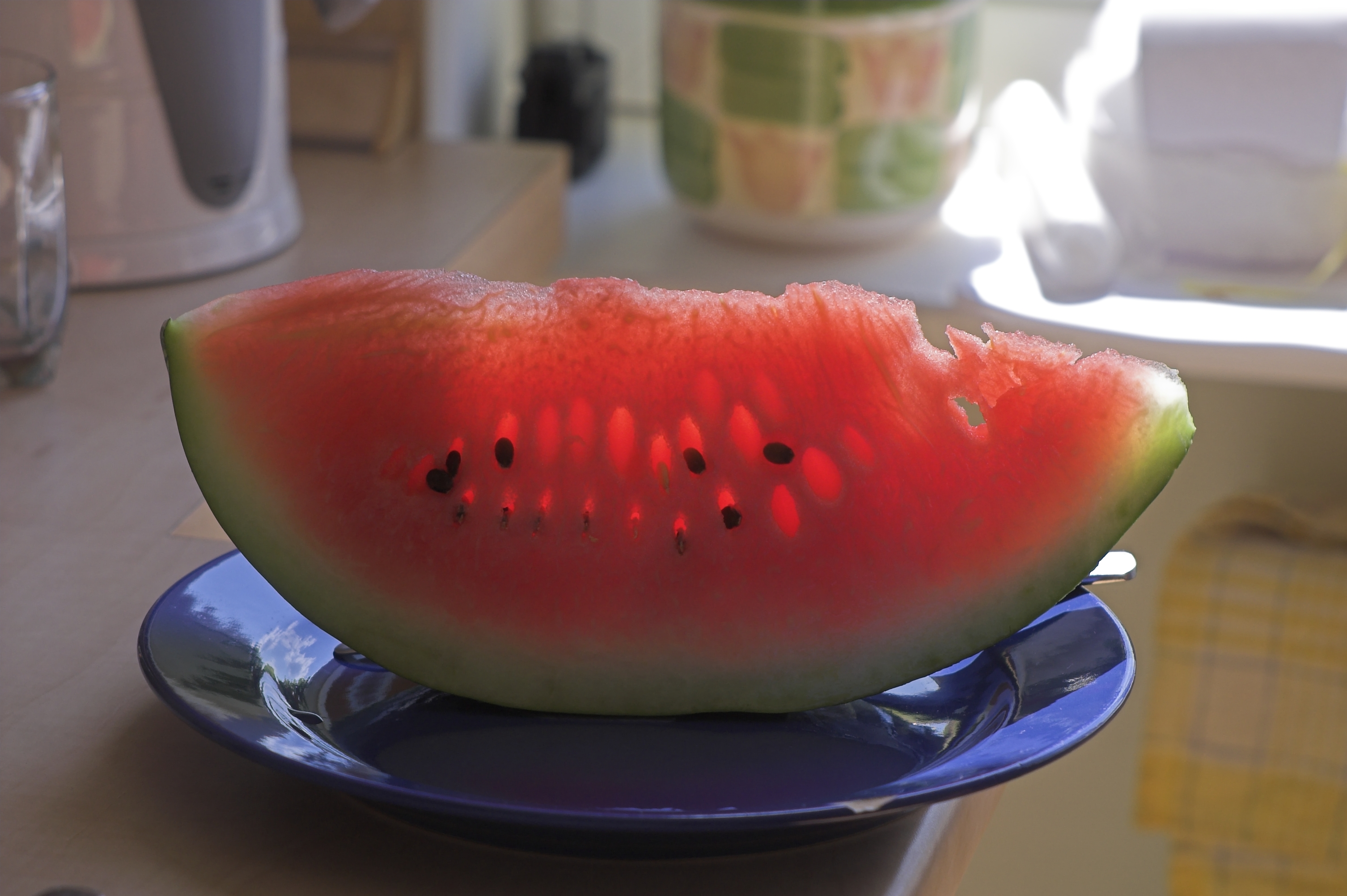When I was a child, I didn’t believe that watermelon had a redeeming quality—beyond using its seeds as a projectile arsenal of sorts. You see, those very same seeds made eating watermelon so tedious, that I steered clear of this fruit for close to two decades!
Then something glorious (and likely, genetically altered) happened: seedless watermelons began showing up in supermarkets and on farm stands! From the first time I laid eyes on this new-fangled, easy-to-consume melon, I was in love. No longer did I need to endure sticky juice dripping down my forearms while I tried to carefully eat my way around a “pit-filled minefield”.
Still, while watermelons admittedly have great flavor, I spent the next decade thinking that because they consisted primarily of water that they were a “nutritional wash out”. Boy was I wrong!
The deep, magenta pink/red of the watermelon’s flesh acts as a neon light calling attention to the fact that something powerful is contained within—specifically, lycopene, an antioxidant which protects against cancer. Watermelon can also aid in cardiovascular health because it contains citrulline, an important amino acid which has been shown to decrease fat storage in fat cells. Additionally, this watery melon, high in vitamins A and C, acts to assist in balancing our electrolytes, which in very hot weather or with strenuous exercise can become off-kilter.
And—not-for-nothin’, as my Brooklyn-born friends say—I really shouldn’t have downplayed the importance of watermelon’s high water content. During the hot summer months, when watermelon is most likely to be consumed, we tend to perspire a great deal, making extra water intake a necessity!
As a final added bonus, watermelon, while sweet on the tongue, has little impact on your blood sugar because it is simultaneously high in fiber. These facts have led me to concede that watermelon is truly wonderful in just about every way!




















